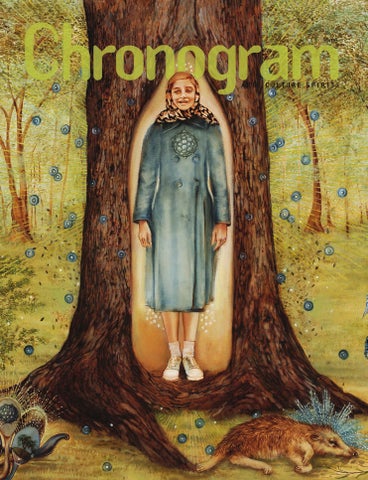
“Judy Pfaff’s Artistic Exploration: The Garden of Unearthly Delights”

## Judy Pfaff: Melding the Real and Imaginary in Contemporary Art at Wave Hill’s Glyndor Gallery
Judy Pfaff, a trailblazer in installation art, captivates viewers at her latest exhibition, *Real and Imaginary*, currently on display at Wave Hill’s Glyndor Gallery, nestled in the Bronx. Her work, transformative and abstract, draws inspiration from her personal environment and years of creative exploration, showcasing a compelling fusion of natural and artificial elements that simultaneously overwhelm and entice the senses.
### A Glimpse into Judy Pfaff’s Universe
Pfaff’s artistic style has long been recognized for its impressive maximalist approach, echoing nature’s untamed sprawl through her distinctive use of materials—both organic and manufactured. Those who have visited her home in the Hudson Valley will find the exhibit familiar in tone: a dynamic and brimming amalgamation of fabricated sculptures, garden aesthetics, and an intricate interplay of assembled materials. Her signature motifs—tree branches, plants, and geometric frames—are all present, woven into an immersive experience that invites viewers to move beyond traditional boundaries of art.
Her career, which spans over four decades, embraces many different mediums and forms, including massive installation work, prints, steel structures, and assemblages. In *Real and Imaginary*, she continues exploring the fundamental nature of artistic creation, often juxtaposing the chaos of organic growth with the ordering hand of human ingenuity.
### A Three-Room Narrative
The exhibition is divided into three rooms, each offering a distinct atmosphere. The first room greets visitors with layers of real and artificial plants arranged meticulously behind LED glass frames. These plants are hydroponically grown, and they contribute to a verdant contrast with distinctly human-made sculptures and steel tubing structures. This installation is a vibrant evocation of life, casting warm reflections as LED lights bleed through chromatic glazing. Though the framing gives the exhibit a somewhat geometric form, the overgrowth of real and synthetic vegetation suggests nature’s tendency to disrupt even the most organized of human designs.
In many respects, it recalls a Donald Judd installation gone feral, where his characteristic minimalist sparseness has been overtaken by riotous growth. Nonetheless, Pfaff’s keen artistic eye maintains control, integrating chaos into harmony. Compared to post-minimalist scatter-artists like Jason Rhoades, Pfaff’s compositions are more deliberate. Her seemingly spontaneous assemblies unravel slowly, connecting in unexpected ways. As viewers grapple with layers of sensory information, they discover hidden juxtapositions that make her work deeply meditative.
### Cold and Poignant: *Doctor Z*
Entering the south gallery casts you into a cooler, reflective sphere dominated by a melancholic white light. The focal point is *Doctor Z*, a stunning work that imagines a scene of haphazard festivity. A draped table is surrounded by metal chairs strewn with ghost-white plastic, giving the impression of once lively revelry abruptly abandoned. This sense of eerie dejection is amplified by objects – overturned glasses, candelabras, and crumpled mesh – suggesting the aftermath of some unseen disaster.
In this environment, Pfaff conjures a ghostly atmosphere. Running through its barren tones is a Victorian elegance intertwined with an apocalyptic chill. The installation is a reimagining of an earlier work titled *Fine Dining: Glyndor BWO Chapel Street* (2024), which embeds itself with a post-industrial twist through stark, cold steel frames. Even in its wintry abstraction, life clings: a leafless, dead tree painted white sits eerily in a chair like a waiting guest, while biometric wire vines arc across the ceiling, embracing skeletal illusions of lost life.
### Majolica & Anthropocene: A Commentary on Environmental Chaos
Pfaff continues her exploration of the intersection between natural cycles and environmental collapse in her final room. Here, wall sculptures layer bravura in their complex use of foam, cardboard, acrylics, and found objects. Two works, in particular—*Hopper Dredge* (2024) and *Glazed and Confused: Rockin’ Lobster Majolica* (2024)—stand out as abstract representations of both nature and human existence during the Anthropocene, a time in which human activity continuously distorts ecological balance.
In *Hopper Dredge*, Pfaff plays with forms reminiscent of the forest floor, teeming with artificial life. The work’s dynamic spillover of faux flora, plastics, wire, and oozing foam seems intentionally unresolved. It evokes the sense of nature’s resurgence, yet suffused with pollutants. Moss and other organic life sprout amid garish streaks of industrial chemicals, creating a surreal tableau where the elemental cycles of growth and decay are interrupted by human interference.
Timothy Morton, a philosopher known for his writings on ecological thought, poses a question relevant to such themes: “How do we move forward from the melancholy of a poisoned planet?” Pf